Day 6, we headed out to visit Jane, a mama who has fully embraced the ways and teachings (ways and teachings??!) of Free the Children.
Here we are in a new home she has been building herself (along with some fundis - construction workers) for the past three years. She is able to find the money to build this new home from a local merry-go-round she belongs to.
There are about 50 merry-go-rounds in the area. Each is joined by women from one area, who pay dues. They meet to discuss community and family matters and every year one woman gets to take home all the dues from that year to use. The merry-go-round helps to decide what she should use it on, be it a form of alternative income (beehives) or sending their child to secondary school, which is not free like elementary school.
This is Jane's current home, where she and her husband and five children eat and sleep. It is divided in half - the other half is for the goats to come in at night, so that they don't get stolen.
The yellow jugs you see are called "jerry cans" and are used for transporting water from the river (about 1km away) several times a day.
Some pink flowers outside Jane's home. There were so many awesome flowers - really colorful and bright. I couldn't get the names of all of them.
Jane took us on a tour of her home and surrounding area while Wilson translated. Here, she shows us her drying rack, which FTC taught her to build. In the past, she had dried them on the dirt floor of her home.
The Mara River, now rushing past us full of water. Rudi told us that just last year, this was only a trickling stream. It's been raining a lot lately, and this is good for everyone.
Here, Jennifer demonstrates how to fill up a jerry can with water. She is balanced atop some rocks, about a meter out from the shore.
Bryan and I loaded up on the way back to Jane's. I'm carrying a smaller one. Jane told us that she usually carries a large one, with a smaller one on top, and when her children were babies, she would carry one baby in the front. She does this several times a day, so having us help her like this was very much appreciated. Two of the jerry cans were taken to another family nearby.
After this adventure, we headed back to Bogani for lunch along with Jane and Jennifer. They spoke about how their lives have changed and we were able to ask them more questions.
After lunch we departed for Oloosiyoi, the village UM had adopted last year and where all our donations had gone to. Here we are in front of the sign. If you'll notice, Bryan's wearing the Klinger necklace.
This came about because when we heard we would be staying at a mobile camp close to the school, we asked for more details and were told it would be like MASH. So of course, we had to have MASH nicknames. We were giving everyone an alias and when it came to Klinger (the cross-dresser if you don't remember), no one wanted to be him. So Paul and I decided we'd have a rotating Klinger for people who did dumb shit. Bryan is wearing it because we got stuck in a huge rut leaving Jane's and while Paul, Finn and Ben got out to push, Bryan stayed in the car with the sick guy and the girl. So there.
Here's the mobile camp - Finn & Rudi's tent is the closest one, at the near left, and mine & Robyn's tent is the one with the tree right in front of it, 4th from the left. Toilets had their own narrow tents. Inside was a plastic toilet set over a deep hole. TP was stuffed into pockets on either side of the tent, and each day they would fill up the hole and move the tent over a few feet. Wash basins were set outside each toilet, a tripod of sorts with a soft vinyl bucket. We had to lather up and then scoop water out of the bucket to rinse off.
Showers were separate individual tents with vinyl buckets hung on top. When we wanted to shower we'd call for "maji ya moto" which means hot water, and the guy (whose name we thought was Majimoto) would come with hot water and pour it into the bucket in the shower. Needless to say, showers were quite fast!
The inside of our tent - it was fun living like this and not once were we attacked by mosquitoes. If you look closely you can see green mosquito nets bound to the sides of the tent. At night these were untied and fitted over the edges of the bed and we could not figure out how to get in without messing it up. So we'd crouch beside our beds and slither into them, careful not to mess the net. And in the morning when we heard everyone zipping and unzipping their tents we would slither out and brush our teeth out front. This was the extent of our roughing it, which was actually pretty cush considering.
Breakfast, lunch & dinner were served at the big mess tent and we ate well - french toast, beans, bacon, pancakes, fresh fruit, salad...
This is the build site at Oloosiyoi school. A youth group had come earlier to dig and fill in the foundation. The scaffolding is there to hold two giant towers of water to supply the school.
We started building close to sunset but we didn't mind because this is what we'd come to do. We jumped right in, moving bricks over and mixing cement.
Here Kristi, Bryan & Robyn work together to fill the gaps between bricks with mortar.The tools we used were rudimentary. They didn't want to bring in any fancy equipment or machinery to support sustainability - they have to be able to maintain and repair the buildings by themselves.
To measure corners and to make sure the building was level, the fundis used strings tied around corner stones and tied to a pointed weight - simple but effective.
This picture pretty much speaks for itself. It was a really long day but we learned and accomplished a lot. That night - you guessed it - MORE TUSKERS!


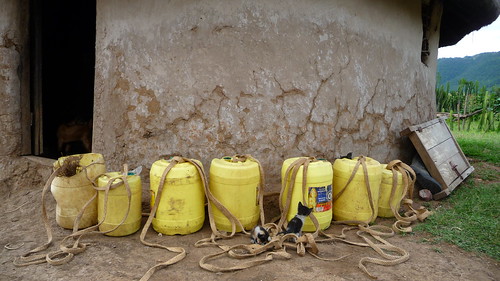



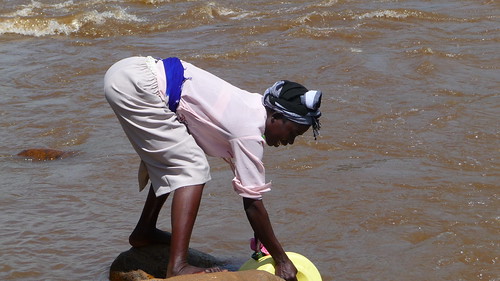

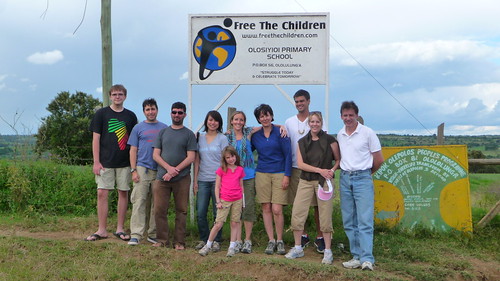
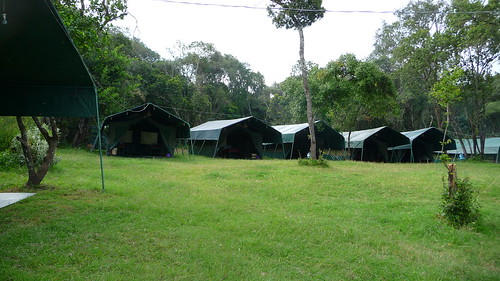



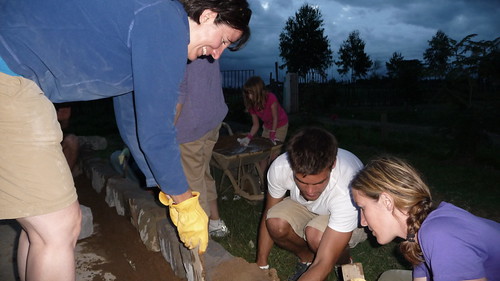
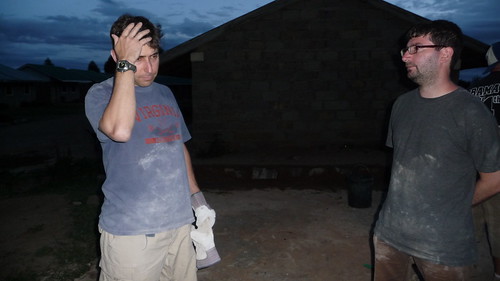
No comments:
Post a Comment